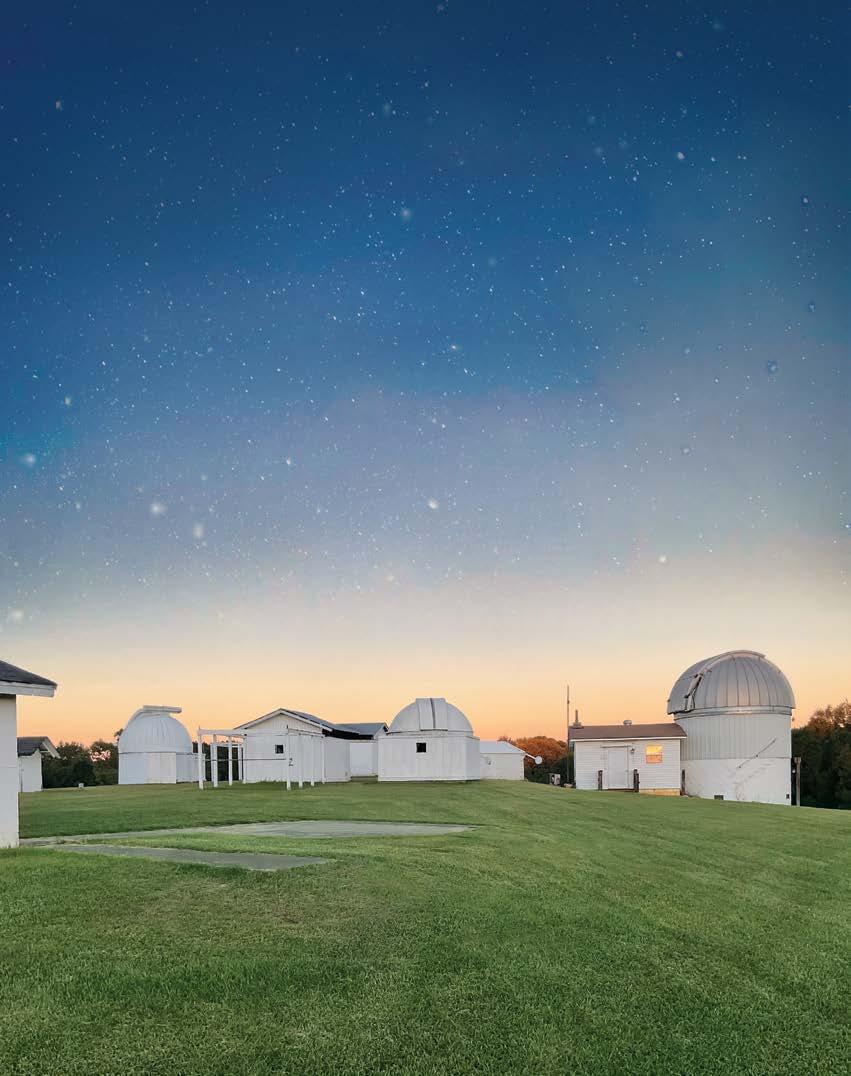









TONY KINTON’S
SONG
MISSISSIPPI AND THE POWER OF THE ARTS SMOKY, SWEET FLAVORS OF FALL






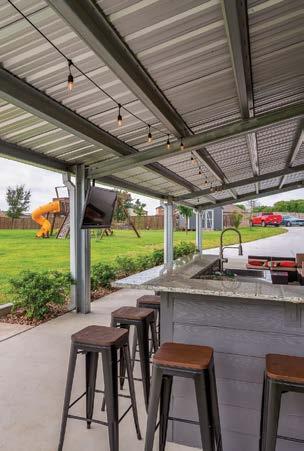































TONY KINTON’S
SONG
MISSISSIPPI AND THE POWER OF THE ARTS SMOKY, SWEET FLAVORS OF FALL



























The cover story in our November issue shows o one of Mississippi’s hidden gems.
That’s something we see as part of our mission at Today in Mississippi. We like to remind our members of the wonderful places to visit and experience right in our own backyards.
The Rainwater Observatory at French Camp Academy in Choctaw County houses one of the largest collections of powerful telescopes in the Southeast.

The facility also houses a planetarium used to teach lunar, stellar, and planetary motion, constellations, and mythology.
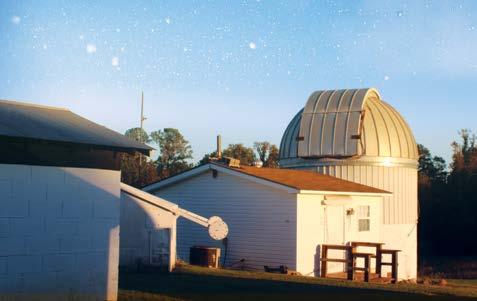
The exhibits at Rainwater include a meteorite collection featuring a meteorite from Mars and a piece of the Chelyabinsk meteorite that hit Russia in 2013.
Rainwater also hosts a free monthly program every second Friday of the month. That program is sponsored by the 4-County Foundation.
The 4-County Foundation was created by 4-County Electric Power Association in 2015 to improve the lives of their co-op members. The foundation money comes from the generosity of 4-County members.
The 4-County Foundation is a perfect example of the one of the seven core
Cooperative Principles our co-ops utilize to put the needs of its members first — Concern for Community.
Cooperatives work for the sustainable development of their communities through policies supported by membership.
Another way of saying that?
Mississippi’s electric cooperatives give back to the communities they are part of because, unlike traditional utilities, cooperatives want to enrich the lives of their members.
So, whether you are an amateur stargazer or someone who just wants to look up at the stars on a dark night and contemplate the wonders of the world, go visit the Rainwater Observatory and tell them you read about it in Today in Mississippi, your electric cooperative’s monthly magazine.




We hope you enjoy the November issue.
by Michael Callahan


Working in my yard
Colorful flowers for each season of the year, sharpening my hoe and oiling my shears, trimming the hedge all these years.
Watching my cat chase butterflies, as I hoe grass from all outside.
Picking up leaves from the Magnolia tree, while the sweet smell still lingers in the breeze.
Sitting on the porch and sipping my tea, the cool summer breeze puts me to sleep.
Sunday arrives, going to church, makes everything right and heals all the hurts. by Lexie Montgomery, a resident of Stringer and a member of Southern Pine.
What do you treasure most about life in our state? Send your brief thoughts to Today in Mississippi, news@ecm.coop or mail to P.O. Box 3300, Ridgeland, MS 39158
Submit your beautiful digital photo of life in Mississippi to Today in Mississippi, news@ecm.coop
 Photos by Chad Calcote
Photos by Chad Calcote
The Official Publication of the Electric Cooperatives of Mississippi
Vol. 75 No. 11
Randy Carroll - President

Ron Barnes - First Vice President
Tim Perkins - Second Vice President
Brian Hughey - Secretary/Treasurer
Michael Callahan - Executive Vice President/CEO
Lydia Walters - VP, Communications
Steven Ward - Editor
Chad Calcote - Creative Director/ Manager
Kevin Wood - Graphic Designer
Alan Burnitt - Graphic Designer
Courtney Warren - Graphic Designer
Chris Alexander - Member Services Coordinator
Steve Temple - Social Media Director
Mickey Jones - Administrative Assistant
601-605-8600

Acceptance of advertising by Today in Mississippi does not imply endorsement of the advertised product or services by the publisher or Mississippi’s electric power associations. Product satisfaction and delivery responsibility lie solely with the advertiser.

• National advertising representative: American MainStreet Publications, 800-626-1181
Circulation of this issue: 480,961
Non-member subscription price: $9.50 per year.
Today in Mississippi (ISSN 1052-2433) is published 12 times a year by Electric Cooperatives of Mississippi Inc., P.O. Box 3300, Ridgeland, MS 39158-3300, or 665 Highland Colony Parkway, Ridgeland, MS 39157. Phone 601-605-8600. Periodical postage paid at Ridgeland, MS, and additional office. The publisher (and/or its agent) reserves the right to refuse or edit all advertising.
POSTMASTER: Send all UAA to CFS. (See DMM 507.1.5.2)
NON-POSTAL AND MILITARY FACILITIES: send address corrections to: Today in Mississippi, P.O. Box 3300, Ridgeland, MS 39158-3300
Since 2020, 100,000 rural Mississippi residents have subscribed to and received reliable high-speed internet from 17 wholly owned subsidiaries of electric cooperatives across the state.
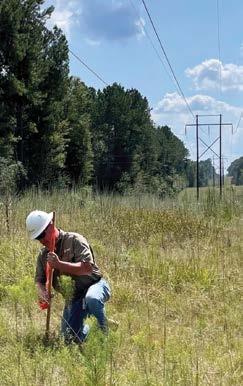
In addition to surpassing the 100,000subscriber milestone, the 17 electric cooperative subsidiaries have collectively built nearly 25,000 miles of fiber optical cable and invested more than $760 million for high-speed internet infrastructure.
“The collective e orts of our electric cooperatives’ subsidiaries will combine to be one of the largest economic development investments in our state’s history. The benefits of this infrastructure investment will impact Mississippians for decades to come,” Electric Cooperatives of Mississippi’s CEO Michael Callahan said. ECM is the statewide organization and the voice of electric cooperatives in Mississippi.
These 17 electric cooperatives began o ering high-speed internet in 2020, so in just a short two-year time span, the cooperatives have created subsidiary organizations, secured funding, completed engineering design plans, constructed fiber lines, and are serving 100,000 rural residents with quality high-speed internet service. The number of subscribers continues to grow every day.
“The work that our cooperatives and their subsidiaries has accomplished over the past couple of years is remarkable. Reaching 100,000 subscribers collectively is an incredible milestone and a testament to the hard work of our employees across the state,” Callahan said. “As the build out for highspeed internet continues across our state, many more rural families will soon have access to reliable and fast internet service.”
Five of the state’s distribution electric cooperatives sent 83 linemen to Florida in the aftermath of Hurricane Ian to help power up the communities who were devastated after the storm.
The crews went to o er support to Peace River Electric Cooperative in Wauchula, Florida following Ian’s landfall on Sept. 28.
Coast Electric sent 29 linemen; Yazoo Valley sent

11; Dixie Electric sent 18; Delta Electric sent nine, and North East Mississippi Electric sent 16.




“Mississippi responded to Peace River’s request by sending all the equipment and personnel that they had the capacity to manage. Almost double that amount was on standby, if needed,” said Gerald Gordon, Electric Cooperatives of Mississippi’s vice president of safety and loss control.





that amount was on standby, if needed,” said Gerald

Wes Graham, a Cooperative Energy transmission field biologist, recently received the designation of “Agent” from the U.S. Fish and Wildlife Service. This designation comes with the responsibility to protect the gopher tortoise through means only allowed by designated agents.
The gopher tortoise is a federally threatened species, meaning there are numerous restrictions on respecting and preserving the species and its habitat. Graham has proved himself as a trusted conservationist on previous projects, leading the Service to grant him agent status.
Graham’s new designation allows him to scope burrows and provide aid to the gopher tortoise on Cooperative Energymanaged properties. Graham said, “This
designation comes with a big responsibility, and I’m so humbled to have received it. We have worked hard over the years to establish pristine habitats along our rightsof-way for species like pollinators and the threatened gopher tortoise. I’m proud of the ‘environmentally responsible’ tagline in our mission statement, and I do my best to uphold that every day.”
Cooperative Energy employees and contractors who work in the proximity of gopher tortoise habitats are required to attend annual training to learn how to spot and protect the species. Graham and his team should be notified of any projects occurring on Cooperative Energy rightsof-way so that proper precautions may be implemented.
If you find computers frustrating and confusing, you are not alone.
the Personal Computer was introduced, it was simple. It has now become a complex Business Computer with thousands of programs for Accounting, Engineering, Databases etc. This makes the computer complex.
You want something easy, enjoyable, ready to go out of the box with just the programs you need. That’s why we created the Telikin One Touch computer.

Telikin is easy, just take it out of the box, plug it in and connect to the internet. Telikin will let you easily stay connected with friends and family, shop online, find the best prices on everything, get home delivery, have doctor visits, video chat with the grandkids, share pictures, find old friends and more. Telikin One Touch is completely different.
One
Secure
Voice
talk, it types.
more.
you to Email, Web, Video

Telikin
to type. Telikin has Speech to Text.

computer is not designed for business. It is designed for you!
was a great investment
M, CopperCanyon, TX
you again for making a computer for seniors"


M, Hilliard, OH
is truly amazing
CentralPoint, OR
toll freeto find out more!
Preloaded


are pre loaded and set up. Nothing to download.
100%
has great ratings
to a real person who wants to help
BBB and Google!
As we move further into the fall, I wonder if there is a more fitting and fun fruit than a pumpkin?


Pumpkins have become a major part of any autumnal or Halloween decoration. And who can resist a fresh pumpkin pie with Thanksgiving dinner? I know I can’t!
The standard pumpkin color for fall decorating has always been brilliant orange. But why limit yourself to just orange? Pumpkin colors include bright and bold red, yellow, white, blue, and multicolored stripes. I’m even seeing bright-yellow pumpkins this year.


They can be miniature, flattened, necked, smooth, winged, and warty. More and more independent garden centers are o ering a wide array of decorative pumpkins (and gourds) for autumnal displays.


Besides their aesthetic qualities, there are some interesting facts about pumpkins you may not know.
While there are more than 150 di erent pumpkin species grown around the world, there primarily are only four species grown for autumn display. These four species have a multitude of selections, according to the University of Illinois Extension, which is my go-to source for pumpkin information.
First are Cucurbita moschata pumpkins, which generally weigh 5 to 10 pounds and are often grown for processing. I’ll talk more about canned pumpkin in a bit.

The Cucurbita mixta species shows tolerance for growing in the Southeast, which is good news for growers and pie bakers in Mississippi.
Cucurbita pepo pumpkins are used for carving scary faces and decorating. This species also includes summer squash and zucchini. Have you ever thought of carving that huge zucchini that didn’t get picked in time?
Last is Cucurbita maxima, which includes pumpkins grown for size like the ones entered in giant pumpkin contests.
I promised more on canned pumpkins earlier. When I lived in Illinois, I was amazed at the amount of processing pumpkins being grown there. In fact, Illinois grows more than 95% of the nation’s processing pumpkins.
Processing pumpkins are tough and aren’t picked by hand. Most growers use mechanical harvesters resembling bulldozers that quickly

move through the production fields pushing the pumpkins.
Canned pumpkin is an essential ingredient for making any pumpkin pastry, including pumpkin pie. But unless the can says 100% pumpkin, it’s likely a mixture of various pumpkin-like squash that have shorter fibers than many pumpkins, resulting in a smoother product.
A Bachman family favorite are homemade, roasted pumpkin seeds.
After carving your scary jack-o-lantern, save and thoroughly wash away the stringy tissue from the seeds. It doesn’t matter the type of pumpkin you use, as the seeds of all pumpkins are edible.
Toss the cleaned seeds with melted real butter — this recipe does not work with any make-believe butter substitutes — sprinkle with sea salt and bake at 300 degrees. Keep a close watch until the seeds are slightly toasty in color.
 by Dr. Gary Bachman
by Dr. Gary Bachman
Gary Bachman, Ph.D., Extension/Research Professor of Horticulture at the Mississippi State University Coastal Research and Extension Center in Biloxi. He is also host of “Southern Gardening” radio and TV programs. He lives in Ocean Springs and is a Singing River Electric member.

Pumpkins have become a major part of any autumnal or Halloween decoration. And who can resist a fresh pumpkin pie with Thanksgiving dinner? I know I can’t!
That title — Swan Song — is an ancient metaphor referencing a common assumption that swans are most often mute throughout their lives. But when a swan nears death, that one sings a beautiful song during its last minutes of life. The metaphor is used to point out a last performance, speech, sermon, or other presentation given by an individual before they die or retire. And since I have no specific notice of imminent death and since I don’t plan to retire, that metaphor may seem out of place. Still, a change in editorial needs in this publication does necessitate a Swan Song for my work herein.
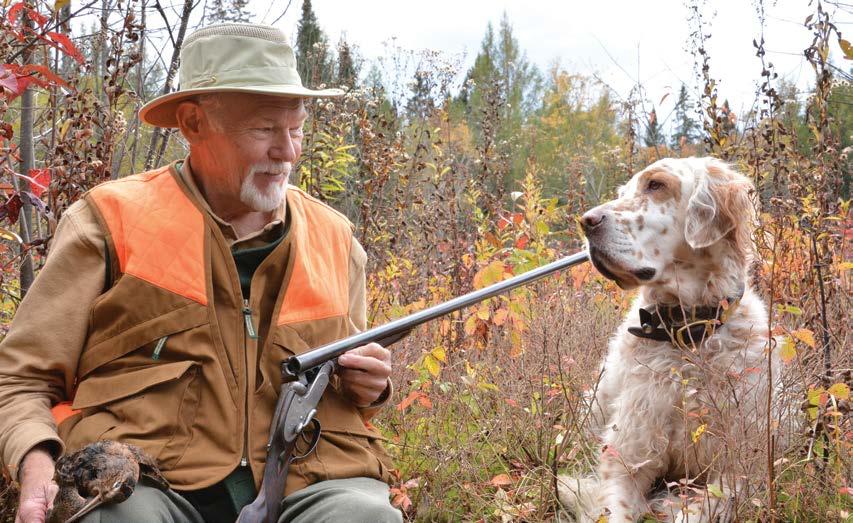



I sold my first feature story to a magazine in 1979. That is a great many years in this mysterious and frantic business of writing. Throughout those years I have been privileged to provide materials to 53 di erent publications, some of those using only a few of my contributions, others among them using one or more a month for years. Just for curiosity, I tried to keep up with numbers of how many pieces were published, but I have done a poor job of it. After all, I am a writer and not an accountant. Maybe 2,000. I can’t be sure. And honestly that number is of no importance.
And there were eight books in that mix. I set a goal to write 10 and might yet reach that. But goal setting and writing books, other than those books that fall into academic and instructional/ informational arenas in their myriad forms, are less than fruitful. Some muse or imagination or deep sentiment (and other guides) are needed for story-telling. And these guides sometimes hide and fail to show up on schedule. So, setting timetables within those goals can make one grumpy.
I do have book number nine finished but not yet published: “God’s Fingerprints: A Wanderer’s Journey.” Stories birthed in the mountains of British Columbia, the woodcock haunts of Vermont, the tumbleweeds of Kansas, the tipi rings of Montana, the mud-between-the-toes of country lads in Mississippi, and the sickle bush and wait-abit thorns of South Africa. All, at least this was my intent, bring honor to the Creator, God.

Among those magazines mentioned above, Today in Mississippi stands out. I have done the outdoor column in it for almost 20 years. And never once was I disappointed to have my byline in there. This publication was and is a jewel.
Among those magazines mentioned above, Today in Mississippi stands out. I have done the outdoor column in it for almost 20 years. And never once was I disappointed to have my byline in there. This publication was and is a jewel.
And you readers: kind, gracious, enthusiastic. I shall miss you. You have invited me into your churches and libraries and civic clubs. Please continue to do so. Contact me at tkinton1@bellsouth.net. My deep appreciation to you all. And farewell.



 by Tony Kinton
by Tony Kinton


Tony Kinton has been an active outdoors writer for 30 years. He lives in Carthage and is a Central Electric member. Visit www.tonykinton.com for more information.
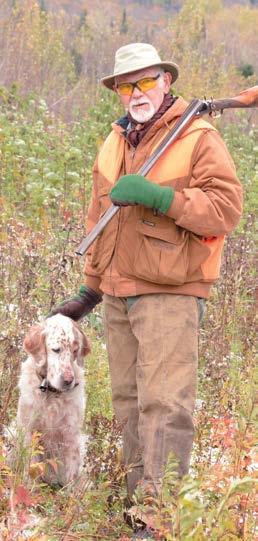


Emmie Perkins discovered her love of music and the arts when she was in the 4th-grade.
“I auditioned and landed a part in a local production of ‘Annie: The Musical.’ When my mom heard me sing for the first time, she thought I was adopted. My gift of music and singing came out of nowhere,” Perkins said.

The role in “Annie” helped pave the way for Hattiesburg native Perkins to be crowned Miss Mississippi 2022 in June and an opportunity to represent the state in the Miss America pageant this December.
Perkins took vocal lessons from the age of 12 to 18 and was encouraged by teachers and coaches throughout the years to pursue a career in music and the arts.
“I would always tell my mom that I felt different from other kids. I told her I had this feeling that my path would be different than some of my peers. I had no idea what that meant at the time, but I stuck with acting, music and singing and it led me to become Miss Mississippi.”
Perkins, 21, is a student at Mississippi State University working on a major in biological science and a minor in music.
When Perkins was growing up, she said the word “pageant” never crossed her mind.
“I never longed to be Miss Mississippi or Miss America. I would watch on TV every year to watch the talent competition, but I never saw myself as one of the high achieving young women on TV.”
But Perkins had a goal of graduating from college debt free and investigated Miss America scholarships.
“Many great mentors in my life encouraged me to compete for the title of Miss Hattiesburg my freshman year of college. I showed up in an evening gown that was too big for me, with no idea what to expect from the experience. Needless to say, I was blessed with the title that night,” Perkins said.
During her junior year of college, Perkins competed for Miss Mississippi State University and won a full tuition scholarship to school for a year.


Perkins’ platform as Miss Mississippi involves the healing power of music — Music is Medicine.
“I noticed the incredible correlation between the healing power of music and the effect it had on the human body. People of all ages, races, and backgrounds were moved by the healing power of the arts and music. Through Music is Medicine, I have brought the arts and music to school systems, hospitals, and nursing homes,” Perkins said.
Perkins said she remembers an encounter with a man in a dementia specific assisted living facility. She gave a presentation called “Memories with Maracas,” and a man in the back never interacted during the program. At the end of the session, Perkins played “Ave Maria” and then the man sat up in his chair and began singing opera. Perkins later found out the man used to be an opera singer when he was younger, and the music had awakened his memories.
When asked about the toughest part of the Miss Mississippi competition, Perkins said she had concerns about her height.
“The night before the preliminary Red Carpet Evening Wear portion of the competition, I told my mom that girls who are 5’1 could never win an evening gown award. Not only did I win the award that night, but I won the overall Red Carpet award for the entire competition. That award was a reminder to more than just me that true beauty is exuded through confidence and light from within,” Perkins said.
Perkins said she wants to inspire young girls across the state and the nation to celebrate who they are and love the things that make them different.
“I want to be the Miss Mississippi who spreads authenticity and honesty about my struggles to all who will listen with hopes that they too will find the confidence from within.”
A vocal trainer in New York City who worked with singers aiming for careers on Broadway once told Perkins she would never make it as a Broadway singer and performer.
“I’m glad I never gave up. I believe God gave me the oppor tunity to represent Mississippi to be a voice for our state. My dream may not be Broadway anymore, but it might be because God had bigger plans for my life. He knew exactly where I needed to be when he placed the crown on my head,” Perkins said.
I’m glad I never gave up. I believe God gave me the opportunity to represent Mississippi to be a voice for our state.




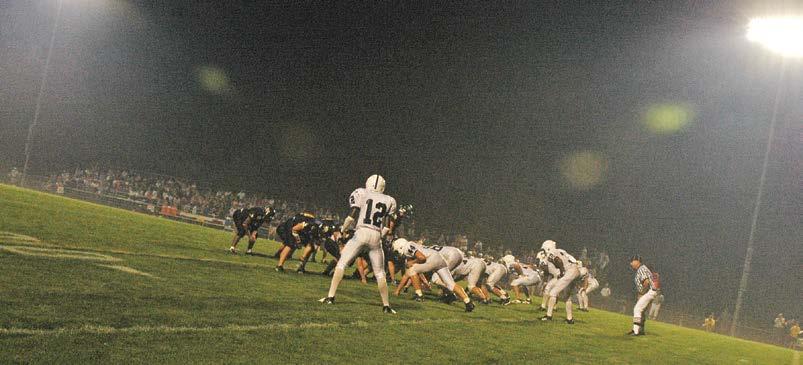





































If you are hosting guests, your household will consume more electricity than normal. Be prepared with e ciency basics:
• Have your thermostat programmed at 68 degrees when you are home and dialed back 8 to 10 degrees when you leave the house or go to sleep.

• Run the clothes washer on cold with full loads.

• When not in use, turn o lights and the TV; fully shut down computers and gaming systems instead of putting them in sleep or standby mode.




• Lower the thermostat when guests are over or cooking food. Most gatherings happen in the center of the home, so save energy by turning the heat down in areas you are not using.

This year, make the switch to LEDs for all your holiday lighting. LED holiday lights consume 70% less energy than conventional incandescent light strands. For example, it costs 27 cents to light a 6-foot tree for 12 hours a day for 40 days with LEDs compared to $10 for incandescent lights.


Pick up a few light timers so you don’t have to remember to unplug your lights every evening. You can also choose to upgrade to smart holiday lights that o er a wide range of app-controlled options, including time, colors, music, and modes.


The holidays are a magical time when we come together with our loved ones to share food, gifts, and quality time. It’s also the most expensive time of year for many of us. Along with the expense of gifts, meals, and travel comes colder weather and darker nights that lead to more electricity use and higher bills.
One way to reduce the financial burden of the most wonderful time of year is by implementing e ciency tips to use less energy at home and lower your monthly bills.

Whether you are making holiday treats or a feast, here are a few tips to help lower energy use in the kitchen.
Use the oven light to check food. Every time the oven door is opened, the temperature inside is reduced by up to 25 degrees, according to the Department of Energy (DOE). When possible, make use of a slow cooker, microwave, toaster oven, or warming plate, which use less energy than an oven and stovetop. According to DOE, a toaster oven can use up to half the energy of the average electric stove over the same cooking time.
Let hot food cool to room temperature before placing it inside the refrigerator. This ensures you don’t increase the temperature inside your fridge and cause it to use more energy to cool down. You can also take some of the stress and expense out of your holiday cooking by asking guests to bring a dish.
If you’re visiting family and friends during the holidays, prepare your home to use less energy while you’re away.
Water heating is the second-largest energy expense in your home, accounting for about 18% of your utility bill, according to DOE. Switching your water heater to vacation mode will reduce wasted energy by keeping the water at a lower temperature. If your water heater does not have vacation mode on the dial, you can adjust it to the lowest setting.
Set your thermostat to around 55 degrees so you’re not wasting energy to heat the home while you’re away.
Instead of leaving lights on all day, consider upgrading a lamp or fixture to a smart lightbulb. This allows you to control lights from afar and set a schedule for the light to go on and o . Another option is to repurpose your holiday light timer for one of your living room lamps.
Lower your energy bills this holiday season with these simple e ciency tips. Happy Holidays!
Miranda Boutelle is the vice president of operations and customer engagement at E ciency Services Group in Oregon.
I don’t



This month, I’d like to share a few simple ways you can make your home more comfortable this winter, which can ultimately help you save on energy bills.
At the onset of the cold weather season, we replace the HVAC filter for better air quality and to help the unit operate more e ciently. You can also keep your home cozier by caulking and weatherstripping windows and doors. If your home is particularly chilly, you can tape or a x heavy, clear plastic to the inside of your window frames to create an additional barrier against the cold. Ensure that the plastic is tightly sealed to the frame to help reduce infiltration.
We know winter can be “ru ,” so we set our thermostat at 68 degrees, a “purr-fect” temperature for people and pets. This is especially important for smaller, short hair and senior dogs — not just for warmth, but for their general health. Puppies, kittens, and older pets with arthritis or other ailments may have a harder time controlling their body heat and need the additional warmth when it’s chilly out.
Pets that sleep close to the floor can be subject to cold drafts that enter your home through windows and exterior doors. If your pet’s bed is near a window or door that feels drafty, tightly roll up a towel and place it near the bottom of the door or window to eliminate the draft. Cutting down on cold drafts helps everyone feel more comfortable during colder months.
If possible, elevate your pet’s bed so it’s not placed directly on a cold floor. An old chair or sofa cushion works well. If you don’t use a dog bed, take some old blankets and create a donut shape on the cushion so the dog can snuggle and “nest” within the blanket. You can do the same for cats but on a smaller scale. Blankets enable pets to nestle into them, even when they aren’t tired, and provide a

companions part of the family.
make sure our whole

out of




comfortable place for dogs and cats to curl up.
During the day, open your blinds and curtains to allow sunlight to warm your home. Close window coverings at night for an added layer of insulation.
During the winter months, we make sure our whole family, including our four-legged members, is cozy — without taking a big “bite” out of our budget
Blankets enable pets to nestle into them, even when they aren’t tired, and provide a comfortable place for dogs and cats to curl up.

At Magnolia Electric Power, we want to help you save energy and money. Check out our app, SmartHub, or visit our website at MEPcoop.com for additional energy-saving tips.








We can’t control the weather, but we can provide advice to help you save energy and keep your family and furry friends more comfortable during the winter season.
by Lucy ShellFor over two decades Tylertown’s Christmas in the Park has entertained thousands of visitors with its colorful lighted holiday display during the Christmas season.
Again, this year, the lights return to Holmes Water Park on the banks of Magee’s Creek at the edge of downtown Tylertown.
The park opens for a walking tour at dusk Wednesday, Nov. 23, Thanksgiving Eve. That night, enter the park using the Hwy. 48 entrance to Southwest Events Center. There is plenty of parking, and you and your family can walk the lighted holiday trail at your leisure, stopping for photos along the way. While there, enjoy hot chocolate and cookies for a donation, visit Santa and Mrs. Claus, and register for a cash door prize that will be awarded at the end of the night. Be sure to bring along cell phones or cameras because there are plenty of photo opportunities. Admission to the walking tour is $5 for adults and $2 for children. The walking tour is a onenight-only event, always on Thanksgiving Eve prior to the nightly drive-through tours of the park beginning Thursday, Nov. 24, Thanksgiving night at dusk.
The park is open seven nights a week for the driving tours from dusk until 8:30 p.m. through New Year’s Eve. Tra c enters and departs the water park at the Hwy. 198 entrance at Magee’s Creek bridge.
In recent years, many of the older displays have been reworked and returned to service. Other displays have been relocated in the park, and the park layout has changed to freshen the look each
year. Kyle Johnson and his team start work at the park on the first of October to have the displays erected and operational in time for its opening.
Admission for the driving tour of the park is $5 per passenger vehicle, $10 for commercial vans, and $20 for buses. The drive through the park generally averages a little over 20 minutes.
Christmas in the Park is a well-known attraction for many who visit several times during the season. The lighted park is a popular stop for many during their holiday travels. It has attracted coverage on television, in newspapers, and in magazines.

The event is sponsored by the Christmas in the Park committee of the Walthall County Chamber of Commerce.

Christmas in the Park’s Holiday Craft Show and Bazaar will be held from 3 p.m. to 9 p.m. on Nov. 18 and 19. Vendors and buyers are welcome to attend for an advance showing of Christmas gifting ideas. Jewelry, décor, baked goods, woodwork, homemade gifts, stocking stu ers, and many unique items are available.
Visitors to the show and bazaar at Southwest Events Center in Tylertown can also enjoy a special preview of Christmas in the Park from 5:30-9 p.m. both nights as wagon rides through the lighted park will leave the events center at periodic intervals. Adults may ride for $5, while children 12 and under ride for free.
For information, call 601-876-2680 or go to www.walthallchamber.org.



 by Katherine Loving
by Katherine Loving
Whether you’re a master chef or a culinary novice, smart appliances add convenience to any kitchen. Smart kitchen appliances can guide you step-by-step or even perform the cooking themselves.
Smart appliances typically rely only on Wi-Fi (paired with a custom smartphone application), while others can work with common smart home systems like Google Home or Amazon Alexa. Smart home systems establish routines based on our activity, like


Induction cooktops are an innovation in themselves. Induction cooking works by delivering energy directly to cookware, using a magnetic field that warms the inside of cookware specifically made for induction cooking. Induction cooktops are 32% more energy e cient than gas cooktops and about 75% more e cient than electric cooktops.
Like other smart cooktops, smart induction models recognize when a pan is placed on an element and automatically turn o when a pan is removed from the cooktop. Brands like Samsung and Bosch o er additional smart functions like synchronization of the cooktop with a (brand-matched) smart ventilation hood. The smart hood activates as soon as cooking begins and adapts to cooking intensity on the fly. Smart Ranges can also include this function and often feature a barcode scanning system that allows you to scan store-bought foods, prompting the oven to start based on the instructions.

Smart ranges can be controlled remotely to preheat, change, and monitor temperatures through the companion app or an integrated home system. A few brands o er a Wi-Fi connected cooking thermometer to allow remote monitoring, leaving the home chef free to do other things while an app keeps an eye on cooking progress.
For novice chefs, many smart ovens and cooktops have guided step-by-step recipes within the app to help control the cook time and temperature.
when we return home from work. You can set smart devices to begin a programmed routine to turn on lights, adjust the thermostat, and other tasks.
For smart kitchen appliances, routines could include preheating an oven, or turning on a co ee maker. Let’s take a look at a few smart appliances for the home chef.

Manufacturers are adding smart functionality to their countertop cooking options as well. The June Oven includes an in-oven camera that allows progress to be tracked from its app. The app also provides progress monitoring with push notifications to your phone when cooking is complete.
Tovala also o ers a smaller, countertop oven for ready-tocook meals. These ovens use barcode scanning technology for both Tovala meals and those from the grocery store.
The Tovala app also uses push notifications to track progress.
Like Tovala, the Breville smart oven o ers guided recipes and an app that directs cooking temperature and function, such as air fry or bake, as the recipe advances.

The Breville smart oven also uses its on-board chip to monitor and stabilize temperature from all sides for more e cient cooking.
Other common kitchen appliances and small devices are getting smart, too. However, these devices feature a smaller set of functions than those mentioned above.
Microwaves from manufactures like LG, Whirlpool, GE, Sharp, and Toshiba include the barcode scanning function to allow productspecific cooking instructions to be sent to the appliance.
Smart kitchen scales, air fryers, and pasta makers are also all available to connect to your phone for guided measuring and cooking.
If you’re looking for a smart kitchen gadget that won’t break the bank, try a smart meat thermometer. These handy little devices work with an app to specify optimal cook time and temperature, and they notify the chef when the meat is ready.
As our appliances and kitchen gadgets get smarter, home chefs will have more options for convenience and functionality.
Bon appétit!
Like other smart cooktops, smart induction models recognize when a pan is placed on an element and automatically turn o when a pan is removed from the cooktop.The June Oven includes an in-oven camera that allows progress to be tracked from its app, which provides progress monitoring and notifications to your phone when cooking is complete. Photo credit: June Induction cooktops, like the Samsung model shown here, transfer heat directly to the cookware, which is specially made for induction cooking. Photo credit: Samsung
A one-on-one
go with
the work
Agnew.
in a black
two
so it's perfect for
both
hoodie
a custom camo-print

from the work of Al Agnew

of
a 10-point
the
This


Halfway between Jackson and Tupelo and just o the Natchez Trace, sits one of the largest collections of powerful telescopes in the Southeast.
The spot used to be a cow pasture.
Today, the cows are gone, and the public has access to telescopes that allow them to eye planets, the moon, stars, and galaxies close up and clear.

During a recent Saturday in October, members of a Florence-based Boy Scout troop and Cub Scout pack crowded the planetarium at the Rainwater Observatory at French Camp Academy to watch a presentation by Edwin Faughn, the observatory’s director.
The observatory, an educational outreach support ministry of French Camp Academy, uses its planetarium to teach lunar, stellar and planetary motion, constellations, and mythology.
Just after the scouts and some of their parents sat in their seats, a dark, crimson light illuminated around them before it slowly transformed into complete pitch black.
Faughn sat in the middle of the chairs that surround the domeshaped theater and asked everyone to be as quiet as possible.
Before long, the scouts looked up at the Big Dipper after Faughn asked them if they could spot the constellation.

Later in the evening, when the sky over French Camp grew dark, the scouts manned the telescopes to look at the real thing.
Although the 35 or so telescopes at The Rainwater Observatory are the big draw, visitors also have access to the planetarium, indoor exhibits including a meteorite collection, collections of rocks and minerals, asteroid models, and a space science art exhibit.
Di erent workshops and programs are held throughout the year including a free monthly program sponsored by the 4-County Foundation every second Friday of the month at 7 p.m. The event includes a main astronomy related presentation, a tour through the exhibits, and telescope observing weather permitting.
Although the 35 or so telescopes at The Rainwater Observatory are the big draw, visitors also have access to the planetarium, indoor exhibits including a meteorite collection, collections of rocks and minerals, asteroid models, and a space science art exhibit.
The observatory is powered by 4-County Electric.
“4-County believes in helping the communities it serves,” said 4-County CEO Brian Clark. “We can make a di erence in our communities through the 4-County Foundation. Organizations like the French Camp Observatory can reap the benefits of our members’ generosity through the Foundation. This is what the Foundation is all about.”
Observatory funding is generated through fees collected for programming, donations from individuals, and grants from foundations and corporations.
During the spring, the annual Midsouth Stargaze and Astronomy Conference attracts amateur and professional astronomers from around the country.
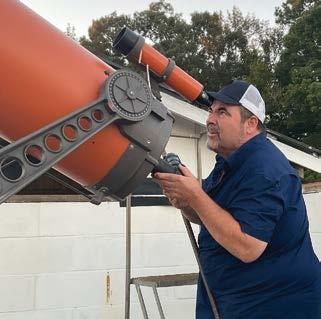

“It is an exciting time of fun, fellowship, telescope observing, astrophotography and fascinating presentations by amateur and professional astronomers,” Faughn said.

Faughn said he is truly amazed at the diversity of people that visit the observatory each year from around the world.


“We had a group here one time with 13 countries represented in a single audience here in central Mississippi. Professional research astronomers have frequently visited Rainwater such as, Dr. Michael A’Hearn, principal investigator for NASA’s Deep Impact comet mission; galaxy researcher Dr. William Keel from the University of Alabama; and Dr. Meagan Urrey, a black hole researcher and dean of the astrophysics department at Yale University,” Faughn said.

The origins of Rainwater were an outgrowth of the desire to appreciate that “the Heavens declare the glory of God” (Psalm 19:1), Faughn said.

In the summer of 1985, a 16-inch reflector telescope was o ered to the Jackson Astronomical Association based in the state capital. At the time, they did not have the room or money for it. So, a member of the association asked Stuart Irby, Jr., French Camp Academy’s board chairman at the time, if the school would be interested in it. Jim Hill, a French Camp Academy teacher, was an amateur astronomer and became excited about the project.

“Hill, assisted by teachers Terry Beutin and Terry Roberts, students Ed Hill and Jerry Thompson, and alumnus Steve Garcia, armed themselves with saws and hammers and caravanned to claim the prize. In addition to the telescope, they brought back a 10’x10’ building with a roll-o roof, along with many books and accessories,” Faughn said.
The building was placed atop of an open ridge on French Camp Academy’s Rainwater farm property about a mile east of the main campus on Highway 413. Far from ambient city lights, the site was an excellent place for an observatory.
Since that time, telescopes worth hundreds of thousands of dollars have been donated to the observatory, Faughn said.

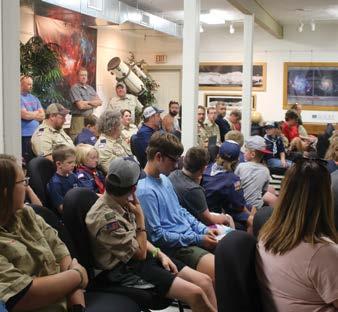
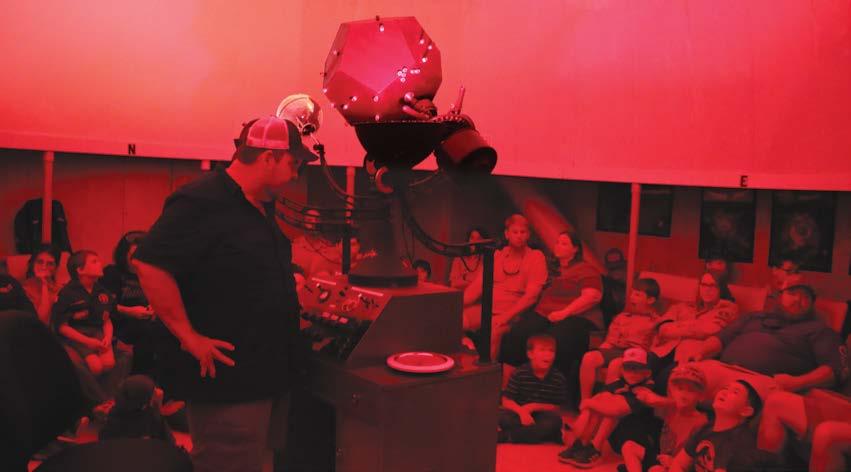
Faughn, 58, has been the director of the observatory since 2009.
An Arkansas-native, Faughn is a space science artist and illustrator as well as a lecturer. His original artwork has also been featured in and on the covers of leading international space science magazines, books, exhibitions, and planetariums.
Before taking over at Rainwater, Faughn worked for nearly 20 years as artist-photographer for the Sharpe Planetarium in Memphis where he produced original traditional media and digital artwork, cartoon characters, and animation for numerous space science, laser light and children’s planetarium productions.
Faughn said his interest in astronomy began at the age of 8 after his parents purchased a small reflector telescope. He said observing the lunar craters and mountains for the first time was a life changing experience.

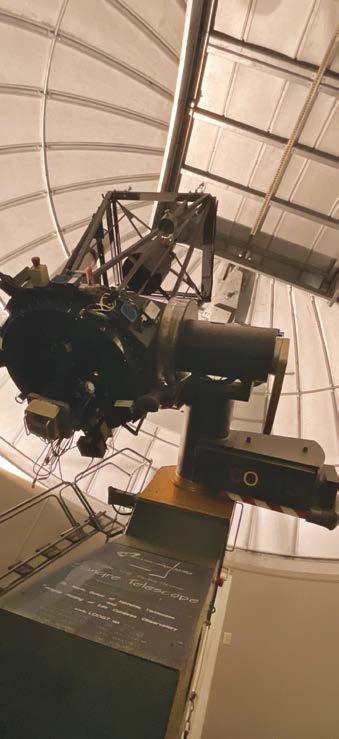
“I remember a recurring childhood dream of walking outside in


the twilight just before dawn and seeing the planets Jupiter and Saturn looming above the surrounding homes at nearly 20 times the diameter of a full moon. Spectacular galaxies and nebulae would also be strewn throughout the starry night sky,” Faughn said.
Faughn said stargazing has been a strong motivating interest in his life.
“When we look up at the stars at night, we are not just seeing points of light, but physical places in the universe. Astronomers have now confirmed over 5,000 other planets orbiting other stars and that number will be in the trillions in years to come. Our minds cannot even begin to fathom the unimaginably vast and beautiful universe we live in. We often take these things for granted and don’t realize we are a part of something far greater than any one of us can even begin to comprehend. The fact that we even exist on this tiny Earth is humbling,” he said.

Centuries
ago, Persians, Tibetans and Mayans considered turquoise a gemstone of the heavens, believing the striking blue stones were sacred pieces of sky. Today, the rarest and most valuable turquoise is found in the American Southwest–– but the future of the blue beauty is unclear.
On a recent trip to Tucson, we spoke with fourth generation turquoise traders who explained that less than five percent of turquoise mined worldwide can be set into jewelry and only about twenty mines in the Southwest supply gem-quality turquoise. Once a thriving industry, many Southwest mines have run dry and are now closed.
We found a limited supply of turquoise from Arizona and purchased it for our Sedona Turquoise Collection . Inspired by the work of those ancient craftsmen and designed to showcase the exceptional blue stone, each stabilized vibrant cabochon features a unique, one-of-a-kind matrix surrounded in Bali metalwork. You could drop over $1,200 on a turquoise pendant, or you could secure 26 carats of genuine Arizona turquoise for just $99

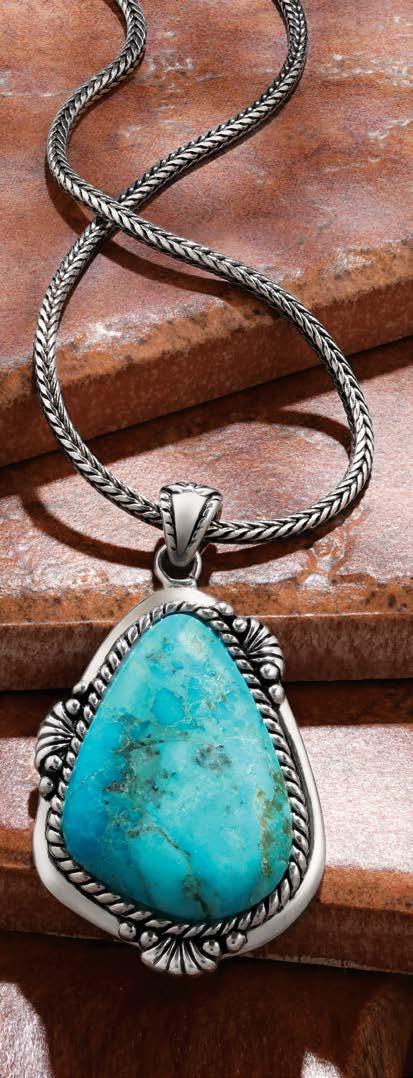
Your satisfaction is 100%
The supply of Arizona turquoise is limited, don’t miss

chance to own
The Lyons name in Biloxi was synonymous with baseball in the 1960s and 1970s. The Lyons brothers were all great athletes starting with the oldest, Kenny, and ending with the youngest, Barry.

Barry had a lot to live up to based on his older brothers’ sports accomplishments. Kenny was the starting quarterback at Ole Miss in 1971, succeeding Archie Manning. The next oldest brother, Tommy, was drafted by the Cleveland Indians but went to Ole Miss on a baseball scholarship. The third brother, Pat, played both football and baseball on the junior college level.
My



“I was the youngest, and all of my brothers were great athletes. I enjoyed being the youngest and looked up to them and wanted to be like them,” said Barry Lyons.
Barry’s dad Kenneth Sr. worked for the postal service for 35 years and was involved with all his sons’ youth sports. His mom, Germaine, was a nurse (RN), and both parents were well respected in the community.
Barry excelled on both the football and baseball fields throughout high school. Delta State University baseball coach Boo Ferris visited him his senior year at Biloxi High School, and that visit was life changing for Barry. “He made a lasting impression on me,” said Lyons, who was o ered both a baseball and a football scholarship with Delta State but opted to concentrate on baseball.
Lyons led Delta State to the Division II College World Series where they finished third in 1982. He was a four-time All-Gulf South Conference and fourtime NCAA All-Region selection for DSU. Barry left Cleveland as the career leader in home runs (36) and RBIs (185). In his All-American senior season, he was named the Mississippi Baseball Player of the Year.

Barry had early success in pro ball as he was named the Carolina League MVP in his second year. In 1985 he set the all-time Jackson Mets regular season record for RBIs with 108, was named the Texas
League All-Star team, and was second in the MVP voting. He was named the Mets Minor League Player of the Year in both 1984 and 1985.
Barry headed to New York and made the Mets’ opening day roster. He made his major league debut on April 19, 1986, against the Philadelphia Phillies. He was the backup to future Hall of Famer Gary Carter that season. Later that season, Barry was sent down to Triple A where his season ended in August when he broke his right forearm. Meanwhile, back in New York, the Mets were on their way to winning the 1986 World Series over Boston. Lyons attended game six and witnessed one of the greatest highlights in World Series lore when he saw Mookie Wilson’s ground ball go through Bill Buckner’s legs. “I would much rather have been down on the field in uniform, but I was seated directly behind home plate and don’t think I could have had a better seat,” Lyons said.
Barry was named the Mets’ opening day catcher in 1990, but later that season after an 8-year career with the team, he signed with the Los Angeles Dodgers. After the conclusion of the 1995 season with the Chicago White Sox, Barry retired from baseball, concluding his 14-year baseball career.
Today, Barry can be spotted back in his hometown at MGM Park in Biloxi where he is the Shuckers’ Team Ambassador. The culmination of his 20 plus years of work was the arrival of minor league baseball in his hometown.
“My childhood dream was to be a major league player and my adulthood dream was to bring minor league baseball to my hometown and honor my parents and family. I was glad to accomplish both,” said Lyons.
• Born: 6/03/1960 in Biloxi
• Draft: 1982, New York Mets, Round: 15, Overall Pick: 370







• College: Delta State

• Debut: 4/19/1986
by Dale McKeeDale McKee is a Waynesboro native who has been writing sports in Mississippi since 1973. He is a member of Dixie Electric. Contact him at ddmckee18@yahoo.com.




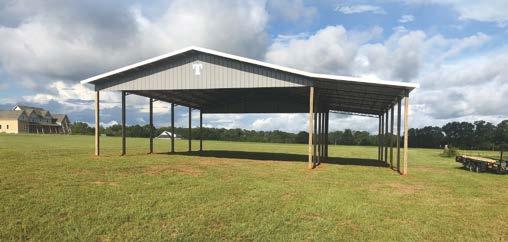










The very best hunting knives possess a perfect balance of form and function. They’re carefully constructed from fine materials, but also have that little something extra to connect the owner with nature. If you’re on the hunt for a knife that combines impeccable craftsmanship with a sense of wonder, the $79 Huntsman Blade is the trophy you’re looking for.
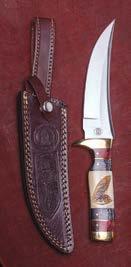

The blade is full tang, meaning it doesn’t stop at the handle but extends to the length of the grip for the ultimate in strength. The blade is made from 420 surgical steel, famed for its sharpness and its resistance to corrosion.
The handle is made from genuine natural bone, and features decorative wood spacers and a hand-carved motif of two overlapping feathers— a reminder for you to respect and connect with the natural world.
This fusion of substance and style can garner a high price tag out in the marketplace. In fact, we found full tang, stainless steel blades with bone handles in excess of $2,000. Well, that won’t cut it around here. We have mastered the hunt for the best deal, and in turn pass the spoils on to our customers.
But we don’t stop there. While supplies last, we’ll include a pair of $99 8x21 power compact binoculars and a genuine leather sheath FREE when you purchase the Huntsman Blade

Your satisfaction is 100% guaranteed. Feel the knife in your hands, wear it on your hip, inspect the impeccable craftsmanship. If you don’t feel like
cut you a fair deal, send it back within 30 days for a complete refund of the item price.
Limited Reserves. A deal like this
last long. We have only 1120
Blades for this ad only. Don’t let this beauty slip through your fingers. Call
What Stauer Clients


Saying About Our Knives
knife is beautiful!” — J., La Crescent, MN
feel of this knife is unbelievable...this is an incredibly fine instrument.”
H., Arvada, CO
pork blade steaks and twice baked sweet potatoes are easy to prepare and easy on the wallet. Pork blade steaks are cut from the shoulder, also known as the “Boston butt.” These thin cut steaks grill-up nice and juicy and take well to a variety of seasonings.
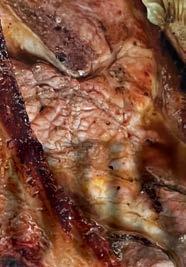

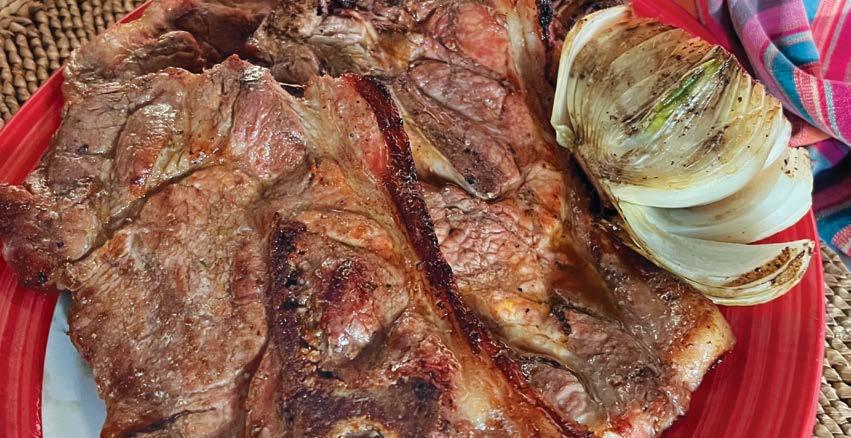
like a simple treatment of Worcestershire sauce, granulated garlic, and paprika. I like to throw a couple of Vidalia onions drizzled in oil and sprinkled with the same seasonings
the grill as a savory side.
allow the skins to harden, the tubers are cured for six or more weeks after harvest. Using this method for baking these
potato season kicked o in the early fall. To optimize sweetness
also enhances their sweetness and yields a flu y, silky texture. An array of spices and topping make these a
a variety of diners and occasions.
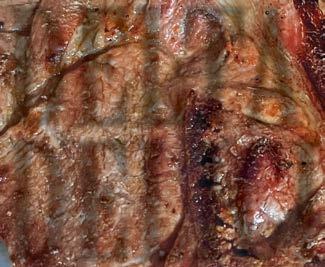
least 2 hours and up to 8 hours.
dry. Discard remaining marinade.
to 8 inches above medium flame for gas grill
coals. Allow grill rack to heat thoroughly. Grill
pieces
minutes on each side turning once until
steaks is at least 145 degrees. Remove steaks
platter and let rest 5 to 7 minutes lightly draped with foil.


4 plump sweet potatoes
Olive oil for coating sweet potatoes
1 tablespoon kosher salt

8 tablespoons salted butter, melted
½ teaspoon ground allspice
½ teaspoon ground ginger
½ teaspoon ground cinnamon
Pinch of cayenne
1 tablespoon molasses or cane syrup
TOPPINGS
Crushed ginger snaps mixed with a little melted butter Pecan pieces
Mini marshmallows drizzled with melted butter
Crushed oatmeal raisin cookies mixed with a little melted butter
Heat oven to 400 degrees. Line a baking sheet with parchment paper or foil. Wash and dry sweet potatoes. Lightly coat sweet potatoes with oil and sprinkle all over with salt. Wrap each with foil and place on tray. Bake for 1 hour. Remove from oven and allow to cool 20 minutes. Unwrap the potatoes and, using a serrated knife, cut each potato lengthwise.
Scoop the soft flesh of the sweet potatoes reserving the potato skin “boats” intact. Mash the melted butter and spice with the sweet potatoes and spoon into 6 of the potato skin shells. Cover with your choice of toppings.
Heat broiler. Keeping a close eye on them, broil for 2 minutes or until toppings are browned.
 by Martha Hall Foose
by Martha Hall Foose
Martha Hall Foose, the author of “Screen Doors & Sweet Tea: Recipes and Tales of a Southern Cook,” won the James Beard Award for American Cooking. Her latest collaboration is “A Good Meal is Hard to Find: Storied Recipes from the Deep South” with Amy C. Evans. Martha makes her home in the Mississippi Delta with her husband and son. She is a member of Yazoo Valley Electric Power Association.

Events
free of charge as space allows. Submit details at least two months prior to the event date. Submissions must include
publication. Email to news@ecm.coop. Events are subject to change.
Soule Live Steam Festival. Nov. 4 and 5. Merid ian. America’s last intact steam engine factory. Belt-driven machine shop in operation. From 9 a.m. to 4 p.m. at the Mississippi Industrial Heritage Museum, 1808 4th St. Admission is $10. Students free on Friday and $5 on Saturday. Details: 601-693-9905 or soulelivesteam.com.
Missions Market Place. Nov. 5. Puckett. Put on by Puckett Methodist Women. Proceeds to go to help children on the autism spectrum attend the Center Ridge Outpost summer camp. Funds will also go to our Friends in Need campaign to help those with cancer and other medical expenses. Our day will include vendors with handmade items, rummage sale, raffle items, and a soup lunch café for $5. We will be selling our frozen casseroles to help you get through the Thanksgiving and Christ mas season. 8 a.m. to 2 p.m. at the Puckett United Methodist Church, 6412 Highway 18 in downtown Puckett. Table space is available for $25. Details: 601-214-7834.
Levee Beats and Eats. Nov. 5. Rosedale. Down town on Court Street 10 a.m. to 6 p.m. Arts and crafts, food, kids area, and live music all day. Annual fundraiser for Friends of Rosedale. Free admission. Details: 662-379-6867,
Magnolia State Gem, Mineral, and Jewelry Show Nov.11 and 13. Pascagoula. Friday and Saturday from 10 a.m. to 6 p.m., and Sunday from 10 a.m. to 5 p.m. at the Jackson County Fairground Civic Center. Exhibits, demonstrations, and educational resources. Fossils, gemstones, jewelry, and supplies will be on sale. Details: 601-947-7245 or www.mgcgms.org

Gingham Tree Arts and Crafts Festival. Nov. 12. Lucedale. Celebrating 50 years. 8 a.m. to 4 p.m. George County Fair Grounds. 9162 Old Highway 63 South. Details: 601-508-7272.
Purvis Street Festival. Nov. 12. Purvis. Crafts, food, entertainment, car and truck show. Main Street. 9 a.m. to 4 p.m. Details: 601-543-9815.
The 68th Pre-Thanksgiving Gospel Singing Show. Nov. 12. Magee. The show begins at 6:30 pm at the Magee High School auditorium at 501 Choctaw St. The artists performing are The Old Paths Quartet, The Revelations, Tim Frith and the Gospel Echoes, and Big Blessing. Details: 601-906-0677.
The 20th Annual Piney Woods Heritage Festival. Nov. 19. Picayune. Celebrate the early days of the Piney Woods region at this event. Enjoy exhibits and demonstrations of traditional skills such as blacksmithing, quilting, spinning, basket-making, and more. Scout and homeschool groups are wel come. Live music performances will take place on the Pinecote Pavilion. Admission for adults is $6 and $3 for children. From 10 a.m. to 2 p.m. at the Crosby Arboretum, 370 Ridge Rd. Details: 601-799-2311 or visit www.crosbyarboretum.msstate.edu.
Holy Land Trip. Nov. 25 to Dec. 4. Ronnie and Beverly Cottingham are hosting a trip to the Holy Land. This will be their 20th time to host trips to “the land of the Bible.” If you’ve ever dreamed of literally walking where our Lord walked, this trip is for you. Sponsored by Jus’ Jesus Ministries, Incorporated of Lucedale. Space is limited. Details: 601-770-1447.
Harvest Christmas Market. Dec. 10. Gulfport. Harvest Church of Gulfport is hosting the event featuring crafters, food trucks, face painters, and activities for the kids. Harvest Church is located across from Sam’s Club on Landon Road. 10 a.m. to 4 p.m. Free to the public. Vendors can obtain an application by emailing harvest churchmarket@gmail.com Details: 228-365-0487.
P.O.
Michael Callahan
39158-3300
39158-3300
It isn’t a magic book. Not like a fairytale. But the minute I opened it, it transported me back through time to my childhood. To Grandmother Cummings’ house in Fulton.
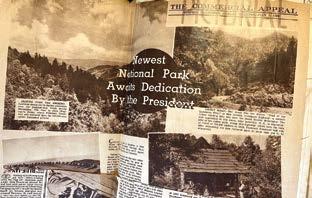
It seems like I have written a lot about Fulton lately. If so, it’s because we have been there so many times this year because of funerals. And it was while attending the latest of these funerals that I got the book. I had not seen it since I was a kid.
My niece, Salem Macknee from North Carolina, brought it with her to this same funeral. It was in a cardboard box along with several of Granddaddy Cummings’ old ledgers. She is donating them to the Mississippi Department of Archives and History and wanted me to take the box back to Jackson with me.



She got the ledgers because mama had them. And after mom passed away, my sister (Salem’s mother) got them. And now that my sister is gone, as is her husband (Salem’s dad — he was one of the recent funerals), it’s up to Salem to go through things and sort them. Granddaddy’s ledgers are part of that sorting.




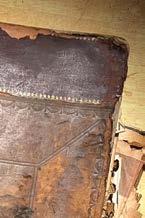
Now, most of the books in the box were just old ledgers — lists of names and numbers. But at the bottom of the stack was the “magic” book. Actually, It was just another ledger. But granddaddy had converted it into one of his scrap books. Over the pages of names and numbers he had pasted articles and pictures about things he thought were odd, interesting, or important. He had glued-up several books like this in which to archive his interests.



When we were kids, we’d pull the books out and flip through them. Grandmother didn’t have a television, so they were fascinating entertainment — pictures of the Taj Mahal, articles about World War II, and photos of people who were celebrating their 50th wedding anniversary.

According to the subjects collected, there was very little grandaddy didn’t find worthy of preserving. The book contained clippings, articles, photographs, and handwritten stories he had saved and pasted. The oldest article I found was from 1924 about the anniversary of the Battle of Shiloh. A lot of the material is from the 1930s. The bulk is from the 1940s.
The subjects range from obituaries to photos from the Rotogravure (rotary press) section of the Memphis and Birmingham newspapers. Oddities of nature, strange acts of God, a handwritten poem worded like the Ralph Stanley’s song, “Oh Death” were included. Re-watch the George Clooney film, “Oh Brother Where Art Thou” if you don’t remember the song.
Now I realize my lifelong curiosity about all sorts of things came to me naturally. Therefore, I couldn’t help collecting stu .






I am somewhat reluctant to pass this particular book on to Archives and History where it may never be seen again. So, Miz Jo wants to know what I intend to do with it. I figure I’ll let that be the next generation’s problem. Passing “stu ” down to the kids seems like another family tradition, just like collecting it to begin with.
by Walt Grayson
Walt Grayson is the host of “Mississippi Roads” on Mississippi Public Broadcasting television and the author of two “Looking Around Mississippi” books and “Oh! That Reminds Me: More Mississippi Homegrown Stories.” Walt is also a reporter and 4 p.m. news anchor at WJTV in Jackson. He lives in Brandon and is a Central Electric member. Contact him at walt@waltgrayson.com.

Now I realize my life-long curiosity about all sorts of things came to me naturally. Therefore, I couldn’t help collecting stu .
Protect, and transactional fees. Reliability Guarantee: Limited time offer, subject to change. Available only to new or returning former customers. Guarantee covers signal loss outages due to normal weather and/or technical issues. Does not cover signal loss outages due to user error. Does not cover changes in programming content. To receive outage credits, you must contact DISH customer service by phone or chat within 72 hours of the outage. Upon verifying the outage, DISH will issue bill credits in daily increments from the time of the outage until the outage is restored. Not available to



Outdoors customers. Other:













